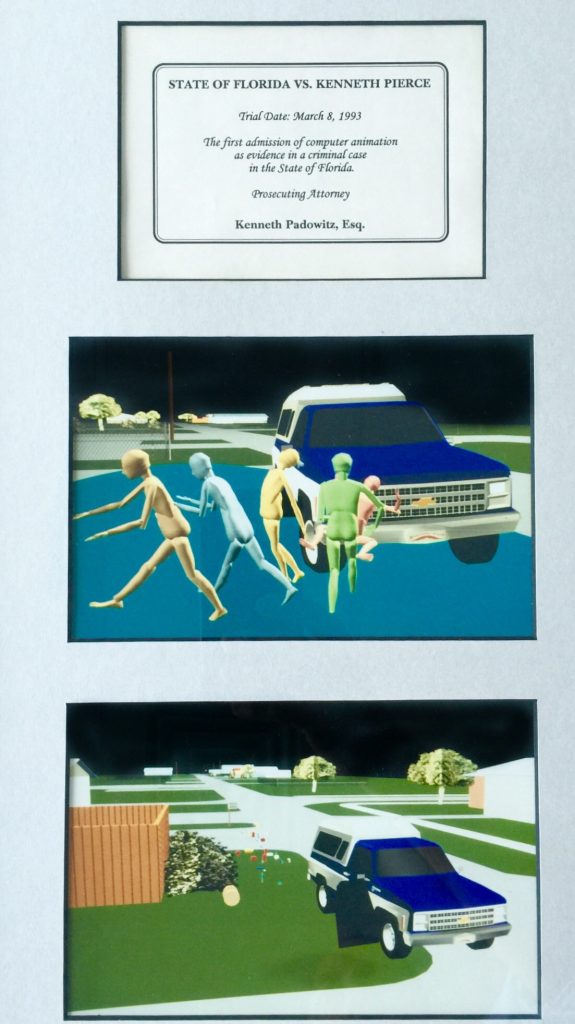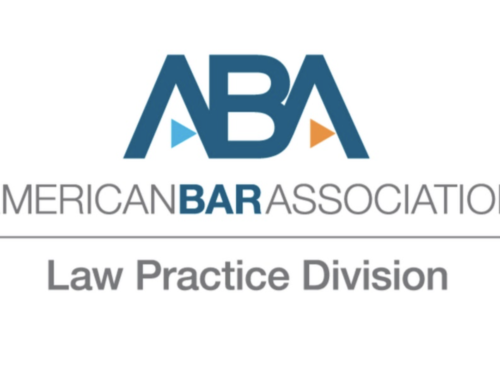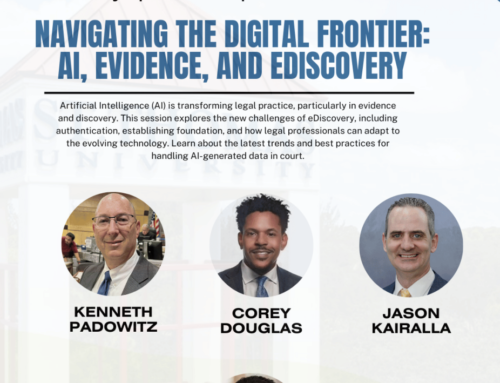But Broward Assistant State Attorney Kenneth Padowitz, who prosecuted Pierce, maintains that jurors are able to weigh video evidence just as easily as any other type.
With the ruling, he said, computer-animated videos will become increasingly popular in criminal courtrooms.
“It gives us the green light,” he said. “This is the first time in the nation that we have an appellate court saying computer animations are acceptable in a criminal case.”
AMY DRISCOLL Herald Staff Writer
Miami Herald
DATE: March 14, 1996
Computer-animated videos, a flashy new legal tool in criminal trials, received a precedent-setting approval Wednesday from the Fourth District Court of Appeal in a Broward manslaughter case.
In a nationally significant ruling, the appeals court upheld the use of one such video in the 1993 hit-and-run trial ofKenneth Pierce, noting that the animated scene was used merely to illustrate an expert’s opinion.
Though the ruling reversed Pierce’s conviction and 60-year prison sentence on separate grounds, it confirmed that video animations — used for years in civil cases — are gaining new acceptance in criminal courtrooms.
Opponents of the new technology have argued that videos carry greater weight for a TV generation of jurors than do more traditional methods, such as photographs or drawings.
Computer-animated videos, a flashy new legal tool in criminal trials, received a precedent-setting approval Wednesday from the Fourth District Court of Appeal in a Broward manslaughter case.
In a nationally significant ruling, the appeals court upheld the use of one such video in the 1993 hit-and-run trial ofKenneth Pierce, noting that the animated scene was used merely to illustrate an expert’s opinion.
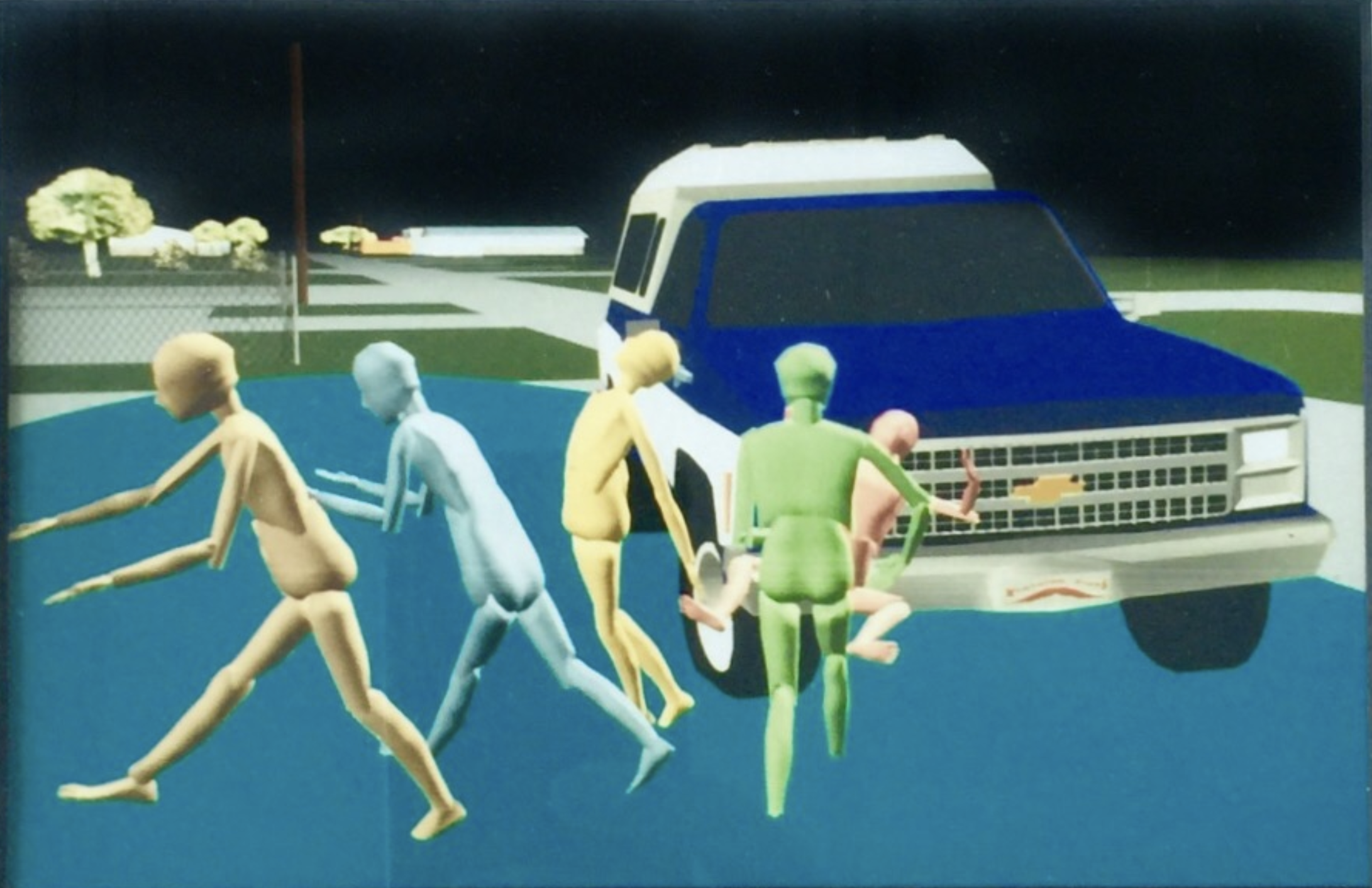
First Forensic Computer Animation entered into evidence by Trial Lawyer Ken Padowitz, March 8, 1993
But Broward Assistant State Attorney Kenneth Padowitz, who prosecuted Pierce, maintains that jurors are able to weigh video evidence just as easily as any other type.
With the ruling, he said, computer-animated videos will become increasingly popular in criminal courtrooms.
“It gives us the green light,” he said. “This is the first time in the nation that we have an appellate court saying computer animations are acceptable in a criminal case.”
In a lengthy section of the opinion, the appeals court judges found that the use of the video in the Pierce case was handled with appropriate restraint. Pierce was convicted of killing 6-year-old Nicole Rae Walker as she played in a puddle along a Dania roadside. Two other children were injured as well when a truck careened into the group.
“Although evidence in this case indicated a bloody scene with screaming victims, the computer animation videotape demonstrated no blood and replicated no sound. Further, the manikins used in the computer animation videotape depicted no facial expressions,” the ruling said.
In addition, the ruling noted that there was “no undue emphasis” on the 2 1/2-minute video, shown to jurors several times during an 11-day trial.
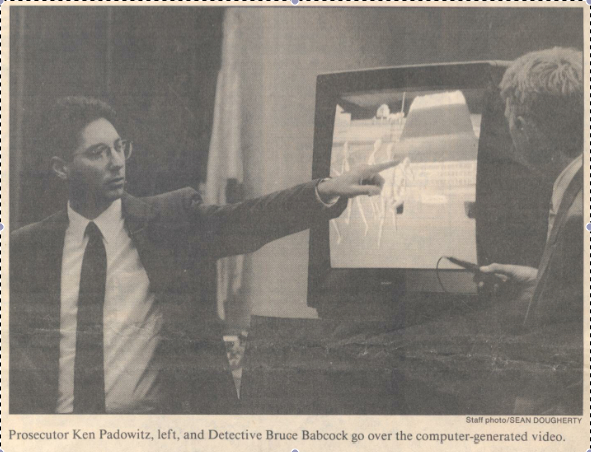
After offering their approval of the new technology, the judges proceeded to reverse the conviction on grounds that the judge, Circuit Judge Mark Speiser, gave jurors inappropriate instructions on the concept of “reasonable doubt.”
Speiser already had been reversed on 13 other cases in which he offered similar definitions to juries in previous cases. Two other judges in the circuit also have been subject to reversals on the same grounds — Circuit Judge Charles Greene in two cases and Circuit Judge Stanton Kaplan in one.
Padowitz said Wednesday he believes the reversal in the Pierce case will be appealed, and the original conviction eventually will stand.


